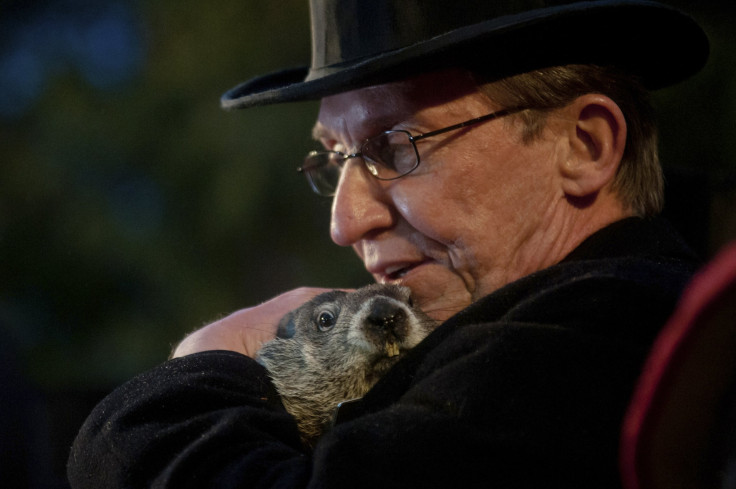Groundhog Day 2016: Facts, Quotes, History And Everything Else You Need To Know About Punxsutawney Phil's Prediction

There's just one day a year when Americans turn to a small mammal to predict the weather. We're talking, of course, about Groundhog Day.
For the annual tradition, thousands of revelers converge on the small Pennsylvania town of Punxsutawney to see if Punxsutawney Phil will emerge from his temporary burrow — a simulated tree stump on a farm — and see his shadow. If that happens, winter weather will continue across the United States. But if Phil doesn't see his shadow, spring temperatures are on the way.
"Groundhog Day is a lot like a rock concert, but the people are better behaved and there's a groundhog involved," Tom Chapin, editor of the Punxsutawney Spirit newspaper, once said.
Groundhog Day derives from ancient Christian and Roman customs in Germany, where Europeans celebrated on Feb. 2 Candlemas, a holiday marking the Virgin Mary's presentation of Jesus at the Temple in Jerusalem 40 days after his birth. If there were clear skis on Candlemas, that usually meant an extended winter. German immigrants brought the rituals to the U.S.
“The groundhog is like most other prophets; it delivers its prediction and then disappears.” William Vaughn, an American columnist and author, once said.
Punxsutawney Phil is immortal, tradition claims. He was named an official oracle in 1887 by a group of groundhog hunters from Punxsutawney. Rivals such as Staten Island Chuck and Gen. Beauregard Lee have tried to undermine his fame, but Phil has maintained his cultural significance. In 1993, "Groundhog Day" became a hit comedy flick staring Bill Murray. The movie was popular in part because of its humorous take on the tradition, with fans repeating quotes such as, “Well, what if there is no tomorrow? There wasn’t one today," and "What would you do if you were stuck in one place, and every day was exactly the same and nothing that you did mattered?"
For those who refuse to believe in the fantasy, it's true that Phil is, well, a fake. Groundhogs in captivity typically live no longer than 10 years. Still a believer? The U.S. National Climatic Data Center has found that Phil is only correct about 40 percent of the time.
© Copyright IBTimes 2025. All rights reserved.






















